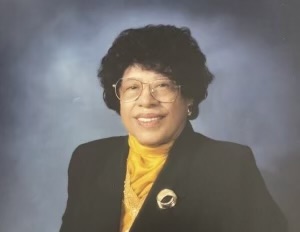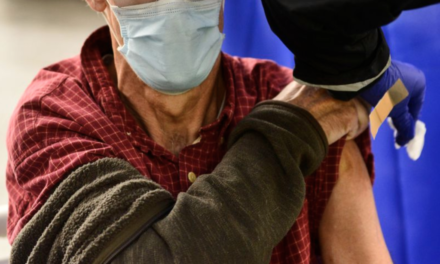By Anna Jones
uab.edu
As a former SEC defensive tackle and NFL recruit, Ka’Darian “KD” Hill was accustomed to high-impact collisions on the field. However, on July 21, 2023, he experienced a collision like never before.
He woke up with his leg trapped between a tree and his vehicle.
After two blood transfusions and five hours of vehicle extrication efforts by first responders on the scene, Hill was air lifted to the University of Alabama at Birmingham Hospital’s Level I Trauma Center for surgery.
Due to the severity of the crash, Hill’s right leg was amputated below the knee. Over the next two weeks, Hill had pre-prosthetic rehabilitation, consisting of occupational therapy and physical therapy sessions, to help him adapt to life without his leg. He had seven surgical procedures to remove the damaged tissue and any foreign objects from the wound. His final procedure involved applying a skin graft to the residual limb to close the wound from his amputation.
“Our goal early on with KD was to help him with his pain and start mobilizing him,” said Conley Carr, M.D., who serves as the medical director of the UAB Orthotics and Prosthetics Clinic and oversees the Limb Loss Clinic. “KD was certainly ahead of the curve and was already moving around the hospital a few days after surgery. While many patients transition over to Spain Rehab after surgery, KD was able to bypass that with flying colors, because he became so mobile so quickly. We were extremely pleased with his progress.”
Prior to the accident, Hill was a defensive tackle on the Ole Miss football team and had been invited to try out for two NFL teams. While he was at Ole Miss, Hill won awards for his leadership on and off the field and was actively involved in serving his community in Oxford, Mississippi.
“I wanted to play in the NFL, but God had something else for me,” Hill said. “I have always known that God wanted me to do something to glorify him and impact him. I used to do that on the football field by mentoring to kids, but I did not know that was going to come to an end at 23 years old from an accident where my leg had to be amputated. There is always a lesson to be learned from the adversity you face in life, and I know that, even through this, God has plans to prosper me and not to harm me. This accident has allowed me to walk into my calling and purpose in life.”
Reclaiming His Independence
In the weeks following the accident, Hill was recovering well and was already using a walker to get around, jump roping on his one leg and continuing his exercise routine. Hill’s recovery specifically was challenging due to the skin grafted area on his residual limb that typically tends to stretch or move at a slower rate than skin surrounding the area. Four months later, Hill’s skin graft had completely healed, and he began the process of being able to get a prosthetic leg at the UAB Orthotics and Prosthetics Clinic.
At this clinic, Hill worked with his care team to carefully design, create and adjust the prosthesis in-house to best accommodate his needs. His prosthetics team digitally took a mold of his residual limb and modified the shape based on pressure points of his leg. Once the shape was modified, they carved the test socket based on the digital mold.
“When I first tried on my test socket, I cried tears of joy,” Hill said. “When you have had the ability to walk your whole life, you can sometimes take it for granted. But when you lose that ability for a little while, it makes you realize how much of a privilege it is to be able to do that. It felt so good to be able to walk again.”
After he tried on his test socket, Hill’s care team made appropriate adjustments and finalized using a plaster mold covered with multiple layers of carbon fiber, fiberglass and nylon. The final socket is coated with an epoxy resin. Hill worked with his team to create a custom design for his prosthesis wrap highlighting images from some of his favorite moments with his family and his community. The wrap is complete with one of Hill’s favorite Bible passages — Philippians 4:12-13.
“After getting a prosthesis, typical recovery process can vary greatly depending on motivation, pain issues, volume issues, etc.; but in KD’s case, being young and very physically fit prior to amputation, recovery speed is greatly increased,” said Brian Mueller, a prosthetist at UAB Orthotics and Prosthetics Clinic. “He progressed from a rolling walker to a cane, to no assistive devices very quickly. No limits were placed on him as to what he could and could not do in the prosthesis other than, if he was tiring or if he was getting sore, he needed to take a break.”
Within a week of his final prosthesis, Hill was walking again and is now back to working out three hours a day.”
“I’m still able to do much of what I was able to do when I had both legs, but I do it even better now,” Hill says as a smile stretches across his face. “I was so used to hopping around, and when I got my prosthetic, I was looking forward to learning how to master it and expand my ability to do more physical activities such as running and working out.”
Wearing a prosthesis requires a lifelong relationship with a prosthetist as well as a physician to address natural changes in the residual limb. Therefore, Hill will continue visiting Mueller, Carr and the rest of his care team on a biannual basis for maintenance of his prosthesis and occasional adjustments that may happen to the limb over time.
“KD is a great young man with an excellent attitude, and I hope to keep working with him for years to come,” Mueller said. “He has been faced with a challenging situation in the loss of his limb and has handled all aspects of his recovery with excitement for the future while maintaining his humble attitude.”
What’s Next?
“As a patient, KD is probably one of the most positive people I have ever seen,” said Carr, an assistant professor in the UAB Department of Physical Medicine and Rehabilitation. “When I came into his room five days after his amputation, he was smiling at me and telling me that he was glad it happened, because this was meant to be. He felt like this would change him in a positive way and in a way that he can help others with their lives.”
Hill has already impacted many through his story and plans to continue by becoming a motivational speaker and allowing God to use his testimony to minister to others.
“While many people may consider this a trial or tribulation in my life, I look at this as another opportunity to be able to impact someone else’s life and to glorify God for what he is doing in my life,” Hill said. “When I begin motivationally speaking, I want to continue to uplift people and encourage them to not quit and to keep pushing when times get hard. When they hear my story, I want them to know that the only way I am standing here today is because of God’s grace and mercy on my life.”
Hill says that one of the biggest motivators behind his perseverance is his son, Kaden, who will be a year old in February.
“I love my son from the bottom of my heart,” Hill said. “I knew the day that this happened, I had to get back up and start swinging for him. One day, he will face adversity in his life, and through this, I can show him how to make it through. I want him to know that, when life hits you, you get back up and you get back up even harder than before.”
“One of the hardest things about this situation is realizing that your life is not over and that there are a lot of things with adaptations that you can get back to doing, such as sports and other activities,” Carr said. “The feats that he wants to accomplish are amazing. With KD, the sky is the limit, and I am really happy for him.”
In addition to pursuing his motivational speaking career, Hill is currently working on a book about his journey with hopes of continuing to encourage people as they weather the storms that come up in their own lives. A chapter of his book can be found here.











